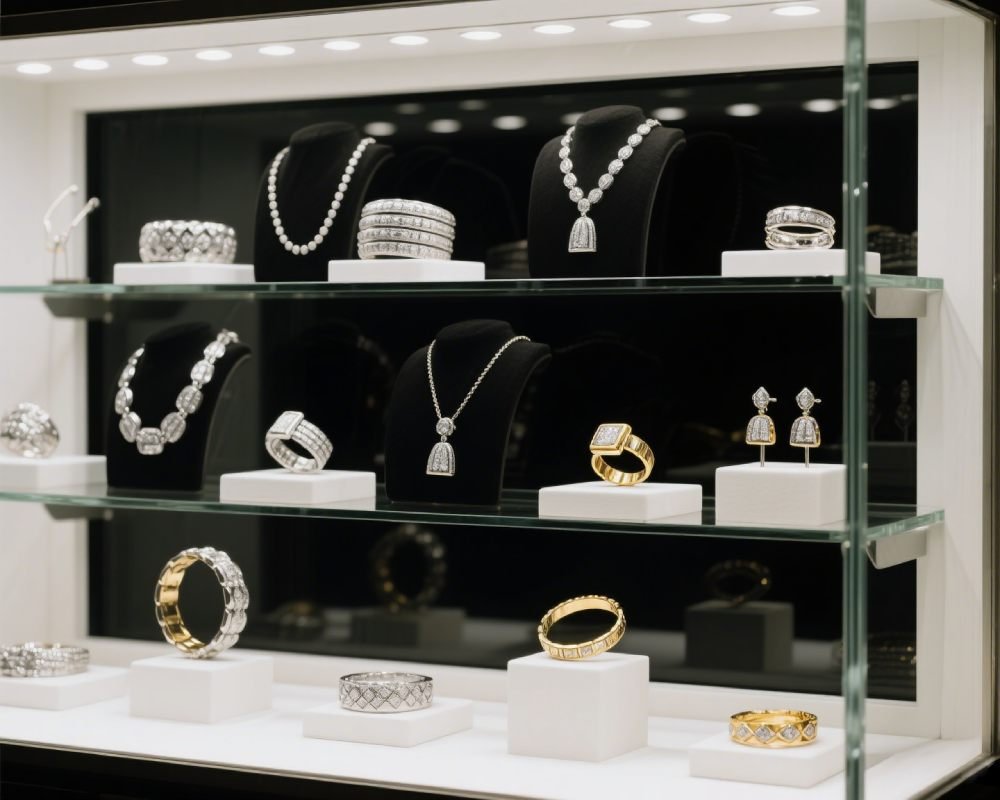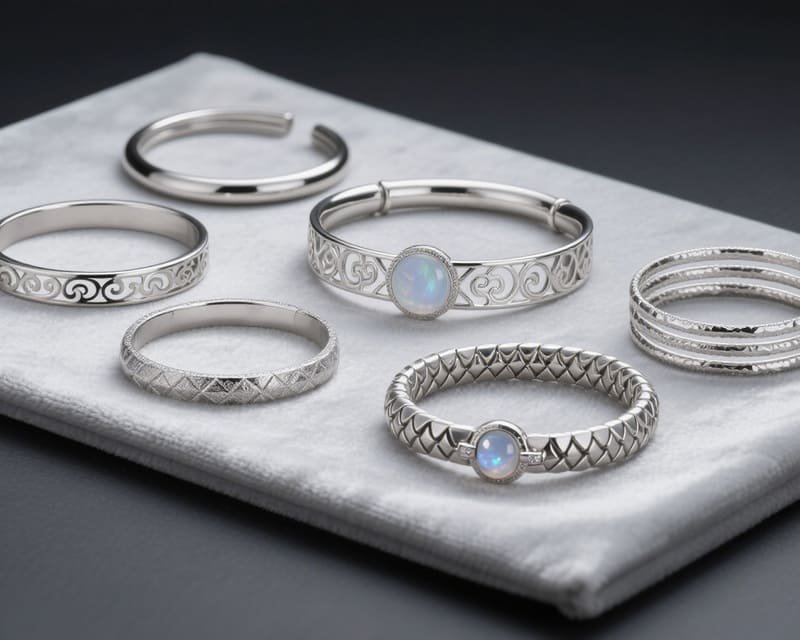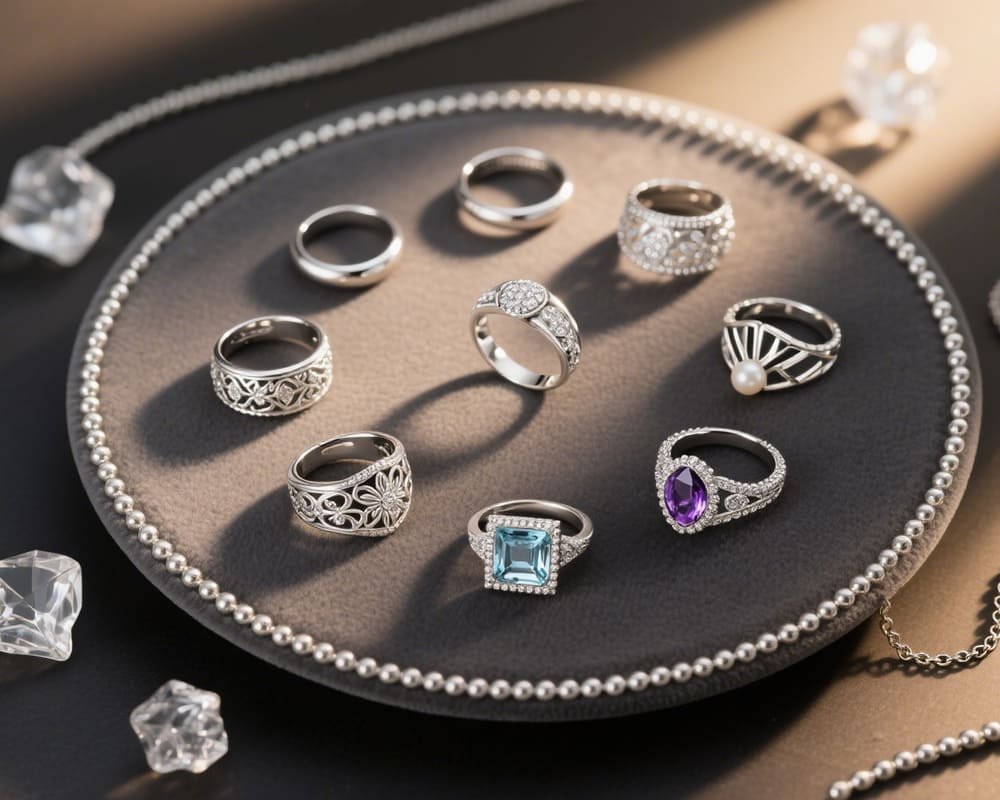In the world of custom jewelry, design, uniqueness, and material value are important, but without a rigorous quality inspection process as support, even seemingly gorgeous jewelry may have hidden defects. Unlike fast-moving consumer goods, jewelry often carries emotions, commemorative significance, and even family heritage. Therefore, quality is not only about appearance, but also a key indicator of whether the jewelry is safe, durable, and trustworthy.
For professional jewelry manufacturers, the quality inspection process runs through every stage of raw material procurement, production and processing, and post-finished product inspection. These processes not only ensure that each product meets the standards in terms of gloss, polishing, and inlay firmness, but also prevent defective products from entering the market. Especially in today’s prevalence of customized jewelry, customer needs are diverse and details are required. The importance of the inspection process is self-evident.
Take Fulcol’s best jewelry manufacturers as an example. We know that every piece of jewelry represents the customer’s taste and emotion. Therefore, from the moment the raw materials enter the factory, we implement a strict inspection system to ensure that quality risks are eliminated from the source. For this reason, the customer repurchase rate of Fulcol’s custom jewelry has remained above 80% for a long time.
Table of contents
- From raw materials to jewelry: How top jewelry manufacturers screen and test raw materials
- Every detail is not missed: key quality control points in the processing process
- Secret weapon in the factory: most common and reliable jewelry testing tools and technologies
- Revealing the secrets of multiple inspection processes: How do top brands achieve zero defects before leaving the factory?
- Practical experience from Fulcol: Full analysis of our quality inspection process
- Custom jewelry buyers’ notes: How to judge whether a brand has a sound quality control system
From raw materials to jewelry: How top jewelry manufacturers screen and test raw materials
High-quality jewelry starts with high-quality raw materials. For sterling silver or brass jewelry manufacturers, raw materials not only determine the metal purity and ductility of the product, but also directly affect the final wear resistance, oxidation resistance and gloss of the jewelry.
Selection of raw material sources: Top manufacturers usually only cooperate with raw material suppliers with complete qualification certifications, such as ISO and REACH certified suppliers, to ensure that the raw materials meet environmental and physical performance standards. For example, the 925 sterling silver materials purchased by Fulcol must be accompanied by a composition test report and environmental compliance certification.
Factory inspection process:
- Appearance inspection: Observe whether there are visible defects such as oxidation, scratches, spots, etc.
- Composition detection: Use XRF (X-ray fluorescence spectrometer) to quickly detect whether the proportion of metals such as silver, copper, and zinc meets the standards.
- Hardness test: Use Vickers Hardness Tester to detect whether the metal has the required ductility and deformation resistance.
Environmental and safety assessment: Especially in the international market, the alloy must not contain excessive heavy metals such as lead, cadmium, and mercury. Manufacturers need to pass RoHS testing or SGS certification reports to prove material safety.
Strict raw material testing process is the first hurdle to achieve high-quality finished products. Only when the raw materials meet the standards can the subsequent processes be more effective.

Every detail is not missed: key quality control points in the processing process
In the jewelry manufacturing process, quality problems are most likely to be exposed in the process stage. Truly excellent manufacturers will set quality control nodes for each processing step to ensure that the finished product is flawless in structure, details and appearance.
Melting and casting stage
Control the metal heating temperature and time to prevent overburning or impurities.
Use high-precision casting molds and vacuum casting equipment to avoid hidden dangers such as pores and cracks.
Surface grinding and polishing
Each piece of jewelry needs to be polished 3 to 5 times with grinding wheels of different grain sizes to ensure a smooth surface without dead corners;
Use a polishing detection lamp (strong light irradiation) to check for fine scratches or dents.
Welding and assembly
Tensile test the solder joints to check whether they are firm;
Check whether the soldering parts are smooth and whether they have a natural transition with the main parts.
Coating and anti-oxidation treatment
Before gold plating and rhodium plating, the metal surface needs to be cleaned and neutralized to ensure adhesion;
Use a salt spray tester to verify the anti-oxidation ability and simulate the long-term effects of sweat and air on the product.
Inlay process inspection
Instruments assist in observing whether the gemstones or accessories are firm;
Manually apply pressure to simulate the force when wearing, and check whether it is easy to fall off.
Secret weapon in the factory: most common and reliable jewelry testing tools and technologies
To achieve international standard testing accuracy, professional tools must be used. The following are the most common and reliable quality inspection tools and their functions currently used in jewelry manufacturing factories:
| Inspection tools | Functions and uses |
| XRF spectrometer | Detect the composition and proportion of metal elements, confirm the content of silver, copper, etc. |
| Vickers hardness tester | Test metal hardness, evaluate ductility and processing suitability |
| Microscope | Check the details of solder joints and gemstone inlays |
| Salt spray tester | Simulate the corrosion resistance of long-term exposure to sweat or humid and hot environments |
| Push-pull force gauge | Test the structural firmness of chain buckles, ear hooks, and ring holders |
| Coating thickness gauge | Measure the thickness of electroplating to ensure the uniformity and wear resistance of the coating |
In the Fulcol factory, each piece of jewelry is fully inspected using at least 3 tools to ensure that the product is not only beautiful in appearance, but also has structural strength and safety in use.
Revealing the secrets of multiple inspection processes: How do top brands achieve zero defects before leaving the factory?
For high-end jewelry manufacturers, “checking multiple processes before leaving the factory” is a manifestation of responsibility to customers. Top brands generally have 3 to 4 inspection checkpoints, each of which is carried out by different quality inspectors to form a cross-verification mechanism.
First step: Semi-Finished QC
Inspect semi-finished products to confirm whether the structural assembly, solder joint strength, inlay position, etc. meet the standards.
Second step: Surface QC
Focus on surface finish, color difference, coating uniformity, and whether there are cracks, flaws and other appearance problems.
Third step: Finished product inspection (Final QC)
Whether the finished product size, weight, and accessories are complete; conduct finished product wearing test, drop test, and wearing experience evaluation.
Fourth step: Packing QC
Check order specifications, customized engraving, and personalized packaging requirements to ensure that customer needs are not missed.
Each process is equipped with a test record system, and any unqualified products will be reworked and shall not enter the market.

Practical experience from Fulcol: Full analysis of our quality inspection process
As a professional jewelry manufacturer, Fulcol is well aware that “quality comes from detail management.” We have established a scientific and standardized full-process quality inspection system, covering every metal particle to every finished jewelry:
Material link: XRF detector + supplier qualification screening double guarantee.
Process link: Five processes have quality inspection points, including micro welding inspection, inlay firmness test, salt spray test, and dimensional error control within ±0.02mm.
Manual + machine cross-inspection mechanism: quality inspector experience judgment + equipment quantitative inspection is carried out simultaneously.
Customer customization demand review: ensure that the customer design drawings, LOGO engraving, and packaging solutions are correct.
All of our experienced quality control supervisors come from technical positions with more than 10 years of industry experience. They have long been involved in the formulation of quality standards for orders from major customers in Europe, the United States, Japan, and South Korea, and have strong execution in quality control.
Custom jewelry buyers’ notes: How to judge whether a brand has a sound quality control system
As a consumer or wholesaler, how to judge whether a jewelry manufacturer has strong quality control capabilities? The following points can be used as a reference:
Check whether it has a complete inspection process introduction and relevant certifications (such as SGS, RoHS, ISO, etc.).
Can you provide a list of testing equipment and instructions for use?
Request a product factory inspection report or quality inspection record.
Observe product details: whether the welding is smooth, whether the polishing is uniform, and whether the coating is firm.
Understand the stability of its quality through repeat customer reviews.
Professional manufacturers are usually happy to show their quality control process because this is their core competitiveness.
| Start Your Custom Order | Email: info@fulcol.com | Number: +86 13055603907 |
Behind high-quality jewelry, there is a complete set of strict quality control systems to protect it. For top jewelry manufacturers, this is the cornerstone of brand trust; for customers, this is a guarantee of safety and value. Whether it is worn daily or given as a gift, only jewelry that can truly stand the test can go further and be remembered longer.
Fulcol always believes that only by doing the “invisible links” to the extreme can the “visible finished product” shine and last. If you are looking for a jewelry customization partner that has both design power and quality control, you might as well start with Fulcol to experience a true quality journey.






